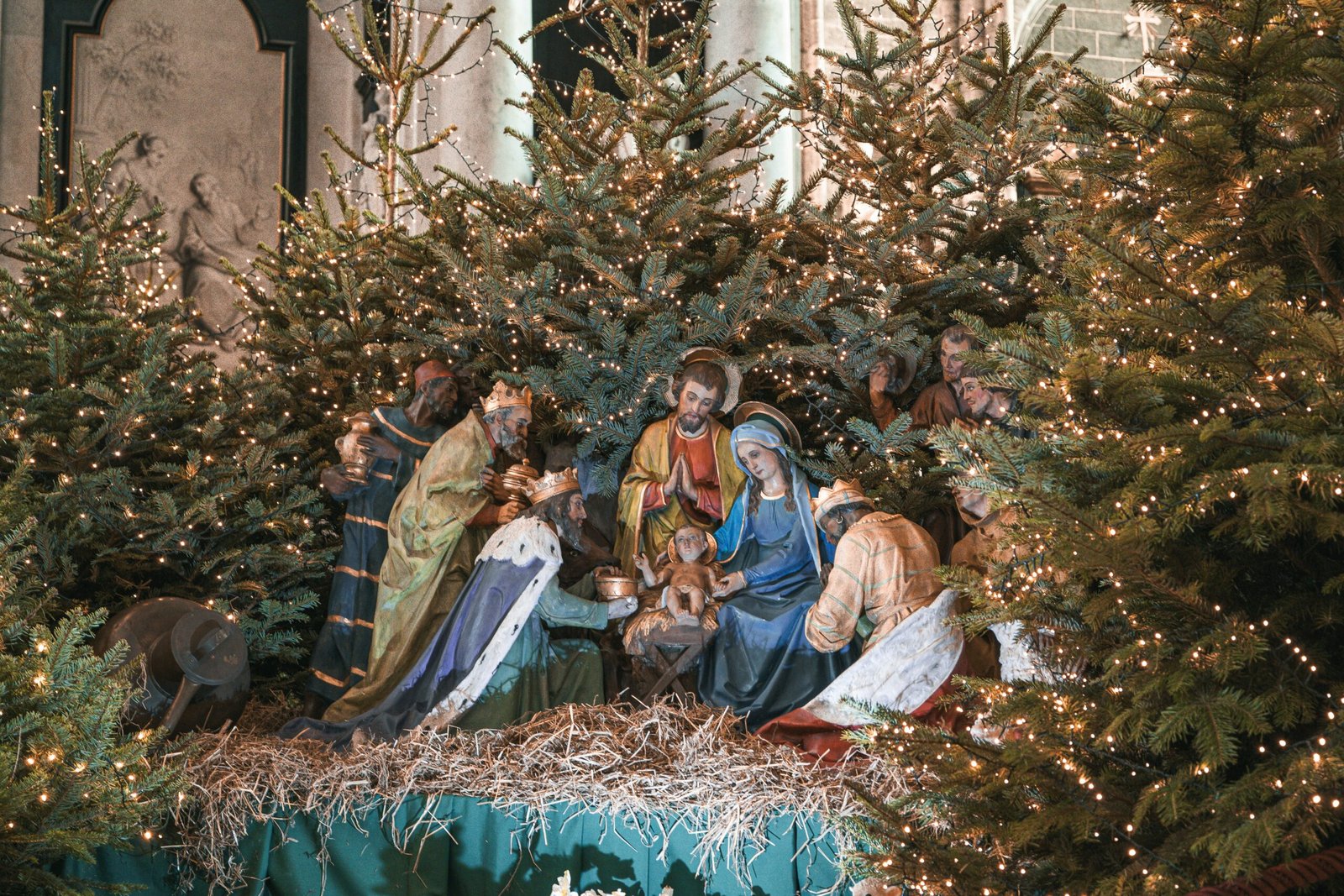Introduction to nativity scenes and their significance during the holiday season
As the holiday season approaches, homes across the world begin to transform into enchanting displays of lights and festive cheer. Amidst this seasonal beauty, one timeless symbol stands out: the nativity scene. These captivating dioramas depict the humble birth of Jesus Christ and serve as a poignant reminder of hope and love during the most wonderful time of year.
For many families, setting up a nativity scene is a cherished tradition that brings people together. Each figure—the Holy Family, angels, shepherds—holds deep significance and tells its own story within this sacred tableau. Whether grand or simple, each nativity scene invites reflection on faith and community while celebrating the spirit of giving.
Join us as we explore the rich history behind these beloved displays, uncover unique designs from around the globe, and even delve into how you can create your very own DIY version at home!
The history of nativity scenes and their evolution over time
The history of nativity scenes dates back to the 13th century. St. Francis of Assisi is credited with creating the first live nativity during Christmas in Greccio, Italy. This act was meant to make Christ’s birth more accessible and relatable.
Over time, this simple depiction grew into intricate displays featuring a variety of figures. By the Renaissance, artisans began crafting elaborate wooden and clay models that showcased local culture and craftsmanship.
As these scenes spread across Europe, each region added its unique flair. For example, Spanish nativity scenes often include additional characters like shepherds and animals reflective of local customs.
In modern times, nativity scenes have taken various forms—from minimalist designs to magnificent outdoor displays—each telling the timeless story in new ways while preserving their core significance within Christian tradition.
Different types of nativity scenes from around the world
Nativity scenes come in many forms, reflecting diverse cultures and traditions. In Italy, the Presepe is a beloved depiction that often includes intricate details and elaborate settings. These charming displays can feature entire villages, showcasing daily life alongside the holy family.
In Latin America, particularly Mexico, the Nacimientos are vibrant and colorful. They often include figures made from clay or wood adorned with traditional clothing. The lively colors celebrate cultural heritage while telling the Christmas story.
Meanwhile, in Eastern Europe, nativity scenes may incorporate unique folk art elements like hand-carved wooden figures. These depictions highlight regional craftsmanship and storytelling traditions.
Asian countries also contribute their interpretations. Some nativity sets blend local customs with Christian symbolism to create stunning representations of this significant moment in history. Each variation offers a glimpse into how different societies honor this timeless event through artistry and creativity.
How to create your own DIY nativity scene
Creating your own DIY nativity scene can be a rewarding and personal project. Start by gathering materials that resonate with you—wood, clay, fabric, or even recycled items can work beautifully.
Sketch out your vision first. Decide on the key figures like Mary, Joseph, and baby Jesus. You might choose to include animals or angels to enrich the story.
For a rustic look, consider using natural elements such as twigs for stable frames or stones for grounding your display. If you’re feeling artistic, paint miniature figurines to bring them to life.
Don’t forget about lighting! A simple string of fairy lights can add warmth and magic. Personal touches are essential; perhaps incorporate family heirlooms or handmade decorations.
As you assemble each piece, let it reflect your values and beliefs—this is more than just decoration; it’s storytelling in its purest form.
The symbolism behind each element in a traditional nativity scene
Each element in a traditional nativity scene holds deep significance. The central figure, Jesus, represents hope and the promise of salvation. His humble birth is a reminder of simplicity over grandeur.
Mary symbolizes purity and maternal love. She embodies compassion, nurturing her newborn with devotion.
Joseph stands for strength and protection. As the earthly guardian of Jesus, his role emphasizes faithfulness and responsibility.
The shepherds reflect humility and the idea that greatness can come from unexpected places. Their presence reminds us to embrace simplicity in our lives.
Angels bring messages of peace and joy. They signify divine intervention during this miraculous event.
Animals like donkeys and sheep represent service and gentleness, grounding the scene in reality while highlighting nature’s harmony with humanity.
Gifts from the Magi embody recognition of Christ’s kingship—gold for royalty, frankincense for divinity, myrrh symbolizing suffering ahead. Each piece weaves together a narrative rich in meaning.
Controversies surrounding nativity scenes in modern times
Nativity scenes have long been a cherished part of Christmas celebrations. Yet, in recent years, they have become flashpoints for controversy.
Debates often arise over their placement in public spaces. Some argue that nativity displays promote a specific religious viewpoint and should not occupy government property. This has led to legal battles across various states.
Additionally, the depiction of figures can stir discontent. Artists sometimes choose unconventional representations, prompting discussions about cultural appropriation or misinterpretation of tradition.
Social media also plays a role in these controversies. Images of unique or politically charged nativity scenes frequently circulate online, igniting passionate debates among viewers.
Furthermore, some communities grapple with inclusiveness during the holiday season. The question remains: how do we honor traditions while embracing diversity? These discussions reflect broader societal changes as people navigate faith and identity amid evolving customs.
Celebrating the true meaning of Christmas through the display of a nativity scene
The nativity scene is more than just a holiday decoration. It captures the essence of Christmas—the birth of hope and love.
When families gather around their displays, they often reflect on deeper meanings. Each figure represents a part of the story that has inspired generations.
Joseph and Mary embody faith and perseverance during challenging times. The humble manger symbolizes simplicity and humility in an extravagant world.
Shepherds, wise men, and angels remind us to cherish community, wisdom, and divine guidance. In these moments, we are invited to pause amidst the hustle.
Setting up a nativity scene becomes an act of devotion—a reminder to prioritize what truly matters: connection with one another, compassion for others, and reverence for new beginnings.
As lights twinkle around it during this season, the nativity invites everyone into its gentle narrative—encouraging reflection on our own journeys through life’s challenges.
Conclusion
The nativity scene holds a special place in the hearts of many during the holiday season. It serves as a powerful reminder of love, hope, and joy that transcends time and culture. From its humble beginnings to its various interpretations around the globe, each nativity scene tells a story steeped in tradition.
Creating your own DIY nativity scene not only allows for personal expression but also strengthens family bonds through shared creativity. Each figure within the display carries deep symbolism, inviting reflection on themes such as humility and compassion.
While controversies may arise regarding modern representations or public displays, they often spark important conversations about faith and community values during Christmas time.
Embracing the true meaning of Christmas is at the core of celebrating with a nativity scene. It beckons us back to simpler times when family gathered around to reflect on what truly matters: love for one another and kindness toward all. As we decorate our homes this season with nativität scenes that capture these timeless messages, let us remember their significance in uniting us under shared beliefs and traditions that enrich our lives year after year.

